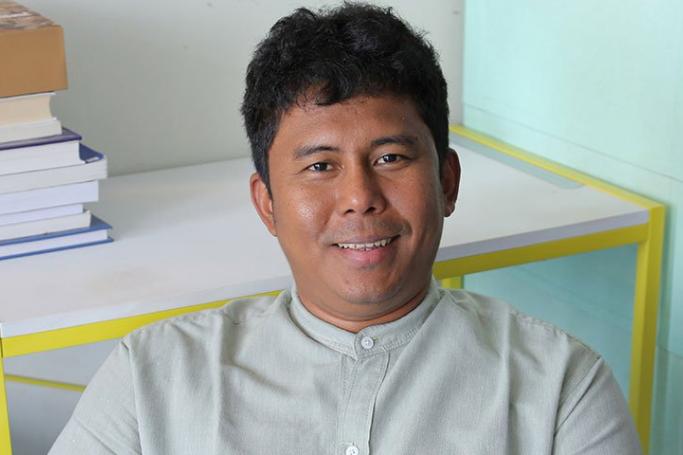U Myint Zaw is one of six winners of the prestigious 2015 Goldman Environmental Prize for his work to protect the environment, according to a press release from the NGO on April 19.
Facing heavy government scrutiny and restricted use of tools like email or social media, U Myint Zaw launched a national movement that helped to successfully stop the construction of the Myitsone Dam on Myanmar’s treasured Ayerawaddy River, according to the NGO.
U Myint Zaw is one of six winners of the award who have been recognised for their efforts to protect the environment in countries around the world.
According to the NGO, the extraction of natural resources in Myanmar—for the benefit of neighbouring countries and at the expense of local communities—became the hallmark of the ruling military regime for many years, prior to President U Thein Sein taking power in 2011.
Among these developments was the Myitsone Dam, a 6,000 megawatt hydropower project proposed by a Chinese state-owned dam developer. Slated to be built on the critical watersheds of the Ayerawaddy River, the dam would displace 18,000 people from nearly 50 villages and submerge their cultural heartland. It would also destroy the immense biodiversity in the area, while putting millions of people downstream at risk from its impact. Meanwhile, the vast majority of electrical output would be going back to China, doing little to address energy needs in Myanmar and the local community.
Raised in a rural area in the Irrawaddy River delta, journalist and social activist U Myint Zaw grew up swimming in the river and climbing neighboring mountains. His childhood taught him the importance of the natural environment as a vital source of water and food, in a country where more than 70 percent of the population lives in rural communities.
His childhood experiences planted the seed for a future career in environmental journalism. While politics remained a taboo subject in the media under government censorship, the environment was largely seen as an entry point to talk about social issues in subtle ways and push for positive change.
After studies abroad in Thailand and the United States, U Myint Zaw returned to Myanmar in 2008 and witnessed firsthand the destruction wrought by Cyclone Nargis. He started a foundation with the initial goal of bringing humanitarian relief; but the journalist in him saw the power of storytelling in connecting the environment’s health and grassroots activism, which was gaining momentum in the aftermath of the disaster. In 2009, with the Myitsone Dam as its lynchpin issue, U Myint Zaw shifted the foundation’s focus to creating environmental awareness.
U Myint Zaw became the creative engine in a public awareness campaign about the dam and the importance of the river. He began organizing art exhibits—a strategic choice, given that galleries were among the few spaces where he could engage activists, scholars, artists and citizens while avoiding government scrutiny. The goal was to showcase the environmental, social, and cultural significance of the river—and what Myanmar stood to lose from the dam.
In a remarkable show of ingenuity and diligence, U Myint Zaw and his colleagues went about their work in a country with very little technological infrastructure and severe government restrictions. Email and social media had very little reach. Authors of unauthorized publications suffered harsh penalties, but U Myint Zaw and his colleagues took grave risks to print and distribute information without submitting it to government censors.
The series of art exhibits turned into a national advocacy movement, with people taking their own initiative to bring awareness to the issue. Artists began writing poems and songs about the river. Citizens spread pamphlets and DVDs about the dam in their own communities. A taxi ride in Yangon one day gave U Myint Zaw irrefutable evidence of how far the campaign had spread. The cab driver recognized U Myint Zaw as one of the people featured in a DVD he saw, and told him he’d made 20 copies and given them to his friends.
The growing movement attracted the attention of newly elected parliament members and local media, whose ability to cover social issues was gaining some breathing room since the new government in 2011. The campaign material, which raised questions about the long-term environmental and social impacts of the dam and foreign investments, reached the upper echelons of government, including the vice president’s office.
In 2011, in what many see as evidence of hope for Myanmar’s fledgling democracy and the environmental movement, President U Thein Sein halted the dam’s construction and vowed the project will not proceed for as long as he’s in office. With Chinese investments rapidly expanding into foreign countries, the dam’s suspension provides an important case study for what happens when development is pushed through by governments without consulting its citizens, according to the NGO.
This year’s Goldman award winners include Marilyn Baptiste from Canada, Jean Wiener from Haiti, Phyllis Omido from Kenya, Howard Wood from Scotland and Berta Caceres from Honduras.
You are viewing the old site.
Please update your bookmark to https://eng.mizzima.com.
Mizzima Weekly Magazine Issue...
14 December 2023
Spring Revolution Daily News f...
13 December 2023
New UK Burma sanctions welcome...
13 December 2023
Spring Revolution Daily News f...
12 December 2023
Spring Revolution Daily News f...
11 December 2023
Spring Revolution Daily News f...
08 December 2023
Spring Revolution Daily News f...
07 December 2023
Diaspora journalists increasin...
07 December 2023
Naungcho to be transformed into tourist destination












